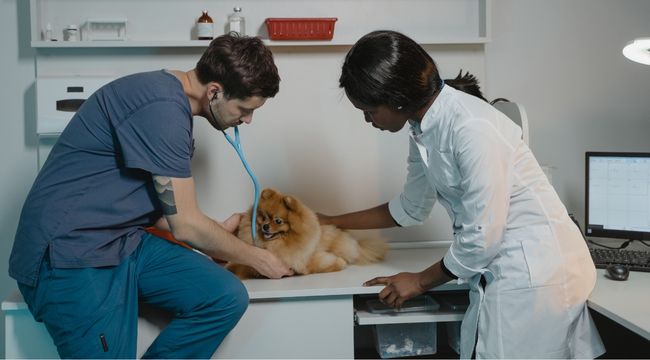
Dogs are beloved members of our families, and when they’re not feeling well, it’s natural to want to do everything in our power to help them feel better. Upper respiratory infections (URIs) are common in dogs and can cause symptoms such as coughing, sneezing, and nasal discharge. While URIs are typically caused by viral or bacterial infections, they can also be caused by allergies or other underlying health issues.
Luckily, there are a number of things you can do at home to help your dog feel better and get better at fighting parainfluenza. In this article, we’ll talk about some of the best ways to treat URIs at home, including natural remedies, changes to your dog’s lifestyle, and over-the-counter medications. With the right care and attention, your furry companion can be back to their normal, happy self in no time.
Causes of Upper Respiratory Infections in Dogs
If your beloved puppy or dog has come down with an upper respiratory infection (URI), it’s important to determine the cause so that you can treat it effectively. The most common causes of URIs in dogs are:
1) Viral infections
Canine influenza is a virus that can make dogs sick and is very contagious. It is a leading cause of upper respiratory infections in dogs of all ages, including puppies. Symptoms of this virus include persistent coughing, sneezing, and a runny nose. But the canine distemper virus, which is less common but just as bad for a dog’s health, can also cause severe symptoms like seizures and paralysis in the back legs, as well as upper respiratory infections. Since these viruses are easy to spread through the air, they pose a big risk to the health of our furry friends.
2) Bacterial infections
Bordetella bronchiseptica and kennel cough are the most common bacteria that cause upper respiratory infections in dogs. They spread through direct contact with infected animals or contaminated objects like dog houses, bedding, water bowls, and food dishes. But these aren’t the only bacteria that can damage a dog’s respiratory system. Streptococcus equi and Staphylococcus aureus also pose a serious threat, causing severe symptoms that need antibiotic treatment right away.
3) Allergic reactions
Allergens like pollen, dust mites, and mold can cause problems for our furry friends because they hide in the environment, waiting to cause an allergic reaction. But it’s not just the great outdoors that poses a threat – certain foods and even insect bites can also trigger an allergic response in dogs. Signs of allergies in dogs include skin and ears that itch all the time, as well as hives. As the body’s natural defense, sneezing acts like a brave warrior, fighting off any irritants or foreign particles that may have gotten into the nasal passages and making it easier for your furry friend to breathe again. As the body’s natural defense, sneezing acts like a brave warrior, fighting off any irritants or foreign particles that may have gotten into the nasal passages and making it easier for your furry friend to breathe again.
4) Coughing
Another common symptom of an upper respiratory infection in dogs is coughing. Coughing is a reflex that helps clear mucus and other things out of the airways. It is important to note that coughing can also be a symptom of other respiratory issues, such as asthma or bronchitis.
5) Nasal Discharge
Clear to scary-looking cloudy nasal discharge tells a story of inflammation caused by the body’s fight against irritants and foreign invaders hiding in the nasal passages. A foul odor, a telltale sign of this ongoing war, serves as a warning to pay heed to the body’s call for aid.
6) Fever
A fever is a sign of hope because it shows that the immune system is working hard to fight off an infection. This rise in temperature can look like anything from a slight increase to a raging fire. Along with the fever, there may be a number of other symptoms, such as feeling tired, not wanting to eat, and being thirsty.
7) Lethargy
Dogs with an upper respiratory infection may feel very tired and lethargic. This is called lethargy. This painful condition can make them lose their zest for life and stop them from doing things they love, like playing and going for walks. Their appetite may also wane, leaving them disinterested in their food and water. This can be scary and upsetting for both the dog and the person who loves it.
8) Inappetence
Inappetence, which is when a dog loses or loses interest in eating, can be a big problem for dogs with an upper respiratory infection because it makes them weak. These furry friends might not want worse. Coats that don’t offer much protection against cold weather. Dogs with thick undercoats may be less prone to dehydration during cold spells due to their ability to retain body heat better than short-haired dogs do. However, you still need to make sure they have plenty of fresh water available at all times.
9) Rest
As winter gets colder and colder, our furry friends may find themselves stuck inside and unable to run around and be free like they want to. If pets can’t run around and play outside, they can easily get stressed and get upper respiratory infections. To make sure they stay happy and healthy during the winter, it’s important to give them plenty of chances to rest and recharge. By giving them time to rest and heal, we can stop problems from getting worse and help their immune systems get back to full strength.
10) Wipe Runny Noses
If your dog’s nose is running and he or she is sneezing, it may be time for a trip to the veterinarian. While these symptoms are common during the winter months, they should not be ignored. If left untreated, they can lead to more serious issues such as pneumonia and bronchitis, which could require hospitalization.
11) Respiratory Support Supplements
There are some naturally occurring ingredients that may provide respiratory support for dogs and help relax bronchioles, ease wheezing, and encourage healthier lung function. These include chelidonium, althea, kali, and others. As always, we recommend you consult your vet before introducing any new medications, synthetic or all natural.
When to See a Vet
If your four-legged friend is showing signs of a possible upper respiratory infection, it is very important to take them to the vet right away. These alarming symptoms may manifest in the form of persistent coughing, sneezing, nasal discharge, or even labored breathing, all of which require immediate attention. Don’t wait; take action right away to make sure your furry friend gets the care and treatment they need.
Moreover, if your furry companion is struggling for breath, seems uncharacteristically sluggish, or is running a fever, it is vital to take swift action and seek emergency veterinary care. These warning signs could be indicative of a severe infection that demands prompt attention. Also, if your dog has frequent or long-term upper respiratory infections, you should take him or her to a vet to get checked out. A skilled vet can figure out what’s causing the infection and give your pet the right treatment to make him or her feel better.
Conclusion
Upper respiratory infections are a common ailment among our beloved four-legged companions. If you think your furry friend has an upper respiratory infection, you should be careful and take them to the vet as soon as possible. In the meantime, you can give your pet much-needed relief at home with things like steam therapy, feeding them, making sure they stay hydrated, and letting them rest. With the right care and attention, your furry friend can be back to their normal, happy self in no time.



